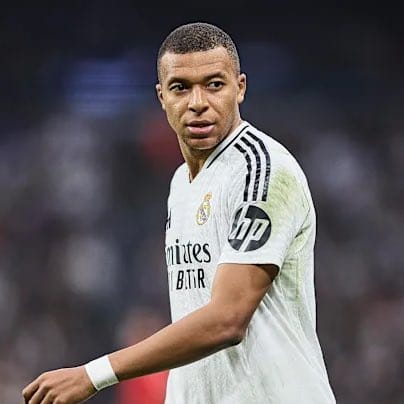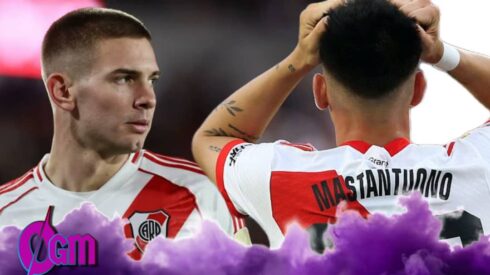When Real Madrid signed Kylian Mbappé, the consensus was clear: they were adding one of the world’s most explosive attacking talents. However, few stopped to ask how his arrival would affect the team’s defensive structure. Last season, Madrid’s defensive success largely relied on outstanding individual performances — exceptional goalkeeping, the athletic range of midfielders like Eduardo Camavinga, and the brilliance of center-backs like Éder Militão. There was no deeply ingrained, system-wide defensive solidity.
Kylian Mbappé’s notorious lack of effort off the ball has exacerbated these issues. Among elite attackers, he ranks near the bottom when it comes to pressing, tracking back, or engaging in defensive duels. By introducing another non-defending forward to a system already stretched thin, Real Madrid placed even greater pressure on a defense often left exposed. Although statistically the defensive dip — from 0.84 to 0.94 adjusted goals allowed per 90 minutes — isn’t dramatic, it aligns with the expected strain, especially given the injuries to key defensive players throughout the season.
An Attack That Got Worse, Not Better
The real shock, however, has been on the attacking side of the ball. In theory, Kylian Mbappé should have turbocharged Madrid’s already potent attack, adding even more goals to a team boasting Vinícius Júnior, Rodrygo, and Jude Bellingham. Instead, the opposite happened: Real Madrid’s adjusted goals scored fell from 1.88 to 1.69 per 90 minutes. Adding arguably the best pure attacker in world football somehow made their offense less efficient.
This paradox can be explained by fit. Elite attacking units thrive on complementary skill sets — think Liverpool’s Mane-Firmino-Salah trio or Barcelona’s Yamal-Lewandowski-Raphinha combination. Each player does something different, creating unpredictable movement and synergy. At Madrid, however, Mbappé and Vinícius occupy the same spaces, both preferring the left channel and cutting inside. Instead of creating new attacking possibilities, they have ended up tripping over each other, leaving gaping voids elsewhere on the pitch.
No Midfield Architect to Link Play
Another underrated factor in Madrid’s offensive struggles has been the retirement of Toni Kroos. With Kroos gone, Madrid lost their primary deep-lying playmaker — the brain behind much of their ball progression. Without a reliable structure for moving the ball from defense to attack, the front line now often finds itself starved of quality service or forced to manufacture attacks from static, unthreatening positions.
The midfield replacements, while talented, lack Kroos’ unique blend of passing range, press resistance, and tempo control. Consequently, attacks have become more improvised and disjointed. It is not simply that Kylian Mbappé, Vinícius, and Rodrygo are overlapping; it’s that they are receiving the ball in poorer conditions, with fewer numerical advantages and less space to exploit. This breakdown in midfield structure has magnified the incompatibilities up front, rather than masking them.
The Importance of Central Presence — and the Lack Thereof
Perhaps the most glaring tactical flaw has been Madrid’s near-total absence of a central presence in attack. None of their forwards — not Kylian Mbappé, not Vinícius, not Rodrygo — naturally operate in the center of the pitch. Touch maps show a massive concentration of activity on the left flank, but little in the middle, where, crucially, the goal is located.
Without a central striker consistently attacking the box or a creative right-winger to balance the offense, Madrid’s attacks have become predictable and easy to defend. Opposition defenses can overload the left side, safe in the knowledge that Madrid won’t effectively exploit central or right-sided spaces. This predictability has led to fewer high-quality scoring chances, despite the immense individual talent on the field.
The Ewing Theory Revisited: Why PSG Thrived Without Mbappé
Interestingly, while Madrid have struggled to integrate Kylian Mbappé, his former club, Paris Saint-Germain, has flourished in his absence — echoing the famous “Ewing Theory” coined by Bill Simmons. Sometimes, the departure of a superstar forces a team to recalibrate, distribute responsibility more evenly, and become more cohesive. That seems to be exactly what happened at PSG after Mbappé’s exit.
Without Kylian Mbappé dominating possession and space, PSG’s collective play improved. More players were involved in the buildup, and the attack became less predictable and more team-oriented. It turns out that, despite his individual brilliance, Kylian Mbappé’s presence can distort a team’s natural rhythm. Real Madrid are now learning the hard way that fitting a superstar into a finely balanced system isn’t always as simple as it seems — and that even the greatest talents can sometimes make a great team worse














